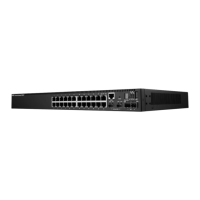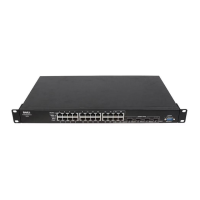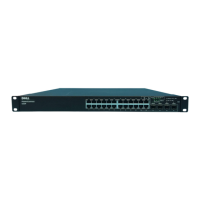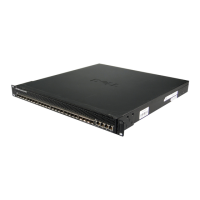680 Dell PowerConnect 55xx Systems User Guide
FILE LOCATION: C:\Users\gina\Desktop\Checkout_new\Maintenance Projects\Dell
Contax\CxUGQoS.fm
DELL CONFIDENTIAL – PRELIMINARY 9/11/12 - FOR PROOF ONLY
• If you bind a policy map to more than one port and one of its classes
contains a single policer, all policy map rules will be multiplied per port
(using up more TCAM resources).
• An aggregate policer applies the QoS to all of its flows in aggregation,
regardless of policies and ports.
Advanced QoS settings consist of the following elements:
• Rules — All frames matching a single group of rules are considered to be a
flow.
• Actions — To be applied to frames in each flow that match the rules.
–
Policers
— See "Single Policers" on page 690
–
Aggregate Policers
— "Aggregate Policers" on page 688
–
Trust
—"Interface Settings" on page 675, "Policy Class Maps" on
page 693
–
Set DSCP/CoS
— "Policy Class Maps" on page 693
–
Set Queue
— "DSCP Mapping" on page 681
• Binding — Combination of rules and actions that are bound to one or
more interfaces.
Workflow to Configure Advanced QoS Mode
To configure Advanced QoS mode, perform the following:
1
Select Advanced mode for the system in the
QoS Mode
page
.
2
If external DSCP values are different from those used on incoming
packets, map the external values to internal values in the
DSCP Rewrite
page.
3
Create ACLs, as described in "Network Security" on page 97.
4
When ACLs are defined, create class maps and associate the ACLs with
them in the
Class Mapping
pages
.
5
Create a policy map in the
Policy Class Maps
pages, and associate the
policy map with one or more class maps. Specify the QoS action, if needed,
for example by assigning a policer to a class map, when you associate the
class map to the policy.
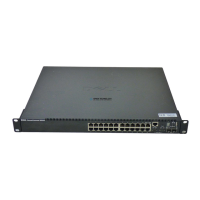
